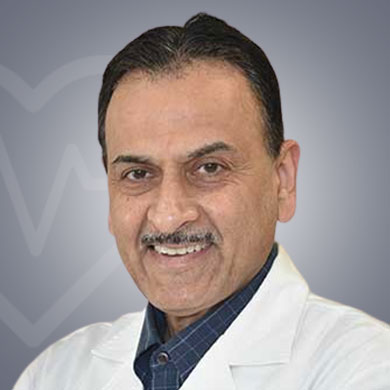A pacemaker is a tiny, battery-operated device that ensures your heart beats at the right speed. Surgery is required to implant the pacemaker, usually beneath the skin near your collarbone. It's also known as a cardiac pacing device.
A pacemaker implant is a small device that weighs around 20 g to 50 g and is the size of a matchbox. It has a pulse generator with a battery, a tiny computer circuit, and a few wires called pacing leads. This system is attached to the heart and it emits signals through the wires. The pacing rate or the rate of electrical impulses can be adjusted as per the requirement of the body and be accordingly programmed. It can sense if a heartbeat is missed or if the heart is beating too slowly. Accordingly, it starts sending a steady signal to normalize the beating of the heart. If the beats are normal, then it simply does not send any signal.
Some of the symptoms observed in patients requiring pacemaker implantation are:
Several tests are conducted before pacemaker implantation to check whether the patient is suitable for it or not. These include the following:
Usually, a patient is kept under observation for more than a day after the pacemaker implantation surgery. It takes around six weeks for the patient to get used to the implanted device. Heavy work must be avoided initially. One should ensure that the concerned arm is not rendered immobile during this time to prevent a frozen shoulder. A physiotherapist can exactly show the movements that you need to perform to keep your arm healthy. Carry the duly filled pacemaker implant card for emergencies to avoid any unwanted situation.

Tel Aviv, Israel
Assuta Medical Center is a leading private hospital in the capital city of Tel Aviv in Israel. Assut...more
![]() Airport Transfer
Airport Transfer
![]() Choice of Meals
Choice of Meals
![]() Interpreter
Interpreter
![]() TV inside room
TV inside room

Bangkok, Thailand
Yanhee Hospital is one of the best multiple-service hospitals in Bangkok, Thailand offers a wide spe...more
![]() Airport Transfer
Airport Transfer
![]() Choice of Meals
Choice of Meals
![]() SIM
SIM
![]() TV inside room
TV inside room

Kuala Lumpur, Malaysia
History Parkway Pantai Hospital in Kuala Lumpur, Malaysia is operating under the Parkway Pantai gro...more
![]() Airport Transfer
Airport Transfer
![]() Choice of Meals
Choice of Meals
![]() Interpreter
Interpreter
![]() SIM
SIM

Cardiologist
Delhi, India
21 Years of experience
USD 32 for video consultation

Interventional Cardiologist
Gurugram, India
30 of experience
USD 50 for video consultation

Interventional Cardiologist
Istanbul, Turkey
30 Years of experience
USD 220 for video consultation

Interventional Cardiologist
Delhi, India
16 Years of experience
USD 32 for video consultation
Q: What is the cost of pacemaker implant?
A: The cost of pacemaker implant varies from one country to the other. There are a variety of implants available and the cost may vary among different manufacturers.
Q: Do I feel heavy with a pacemaker Implant?
A: Initially yes, but slowly you get use to it.
Q: Is a pacemaker cost covered under insurance?
A: Usually insurances do cover pacemaker cost.
Q: What are the risks of pacemaker implantation?
A: Patients rarely experience complications during or after pacemaker implantation. Infection, perforation in the cardiac muscle, leakage of air around the lungs, and problems with the pacing leads are some of the complications associated with this procedure.
Q: How soon can I drive after pacemaker surgery?
A: You can start driving within a week as long as you do not experience any discomfort such as dizziness and fainting. You should start driving only after consulting your doctor.
Q: How long does a pacemaker battery last?
A: A pacemaker battery may last anywhere between 6 to 10 years. Another surgery to replace the battery is required after that.